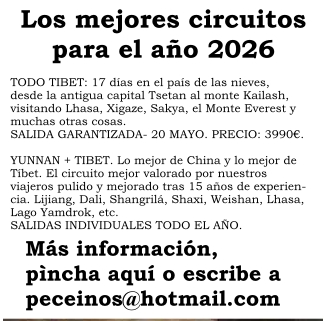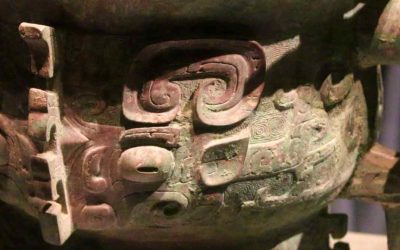Peter Harvey. Buddhism: Teachings, History and Practices. Cambridge University Press. 2013.
(Excerpts from the book. Page 11 and ff.)
In its origin, Buddhism was a Samana-movement. Samanas were wandering ‘renunciant’ thinkers who were somewhat akin to the early Greek philosophers and mystics. The Samanas rejected the Vedic tradition and wandered free of family ties, living by alms, in order to think, debate and investigate. The main Samana groups of Buddha’s time were:
JAINS
Jainism was founded, or at least led in the Buddha’s day, by Vardhamāna the Mahāvīra, or ‘Great Hero’. It teaches that all things, even stones, are alive, each containing a Jīva, or ‘Life-principle’. These are seen as individually distinct, rather like the Western idea of a ‘soul’ but unlike the universal Ātman of the Upanisads, and to be naturally bright, omniscient and blissful. The aim of Jainism is to liberate one’s Jīva from the round of rebirths by freeing it from being weighed down by an encrustation of karma, seen as a kind of subtle matter. The methods of doing so are primarily austerities such as fasting, going unwashed and pulling out the hair, so as to wear out the results of previous karma, and self-restraint, total non-violence to any form of life, and vegetarianism, so as to avoid the generation of new karma. The free-will of the Jīva is emphasized, though even actions such as unintentionally killing an insect are held to generate karma.
AJIVIKAS
Their founder was Makkhali Gosāla (Skt Maskarin Gośāla). Gosāla’s key doctrine was that niyati, or impersonal ‘destiny’, governed all, such that humans had no ability to affect their future lives by their karma: actions were not freely done, but were determined by niyati. Gosāla thus believed in rebirth, but not in the principle of karma as that which regulates the level of a person’s rebirth. The ‘Life-principles’ of living beings are driven by niyati alone through a fixed progression of types of rebirths, from a low form of animal to an advanced human who becomes an Ājīvika ascetic. The Ājīvikas practised rigorous asceticism such as fasting, nakedness and perhaps also disfiguring initiations, and aimed to die by self-starvation (as Vardhamāna in fact did), as a fitting way to end their last rebirth.
MATERIALISTS
The Materialists’ aim was to lead an abstemious, balanced life which enjoyed simple pleasures and the satisfaction of human relationships. They denied any kind of self other than one which could be directly perceived, and held that this was annihilated at death. They therefore denied the idea of rebirth, and also those of karma and niyati. Each act was seen as a spontaneous event without karmic effects, and spiritual progression was not seen as possible.
SKEPTICS
The Skeptics responded to the welter of conflicting theories on religious and philosophical issues, and the consequent arguments, by avoiding commitment to any point of view, so as to preserve peace of mind. They held that knowledge on such matters was impossible, and would not even commit themselves to saying that other people’s views were wrong. The Buddha saw this evasive stance as ‘eelwriggling’, though he shared the wish to step aside from the ‘jungle’ of conflicting views, and avoid dogmatic assertions built on flimsy grounds.
More posts on Chinese culture
Los dioses están borrachos. Enfoques comparativos de la religión china.
Los dioses están borrachos. Enfoques comparativos de la religión china. Este es un libro completamente original sobre las religiones de China. En vez de seguir el repetido mantra de la existencia de tres religiones y describirlas con mayor o menor acierto, que como el...
La posesión por los espíritus en la antigua China
La posesión por los espíritus en la antigua China Acabo de terminar de leer Los antepasados están borrachos, un libro de Jordan Paper . Tal vez uno de los mejores libros sobre la religión en China que se pueden encontrar, pues con cada uno de sus capítulos, casi con...
Cheng Naishan y la aristocracia de Shanghai
Cheng Naishan. The Blue House. Panda Books. 1989. “Cheng Naishan cautiva a los lectores con historias acerca de las vidas presentes de los capitalistas de Shanghai, que han superado 30 años de vicisitudes políticas, así como las vidas de sus hijos.”Así comienza la...
Libros y estudios sobre historia de China
Libros y estudios sobre historia de China Son solo obras leídas en los últimos años, desde que empecé a realizar pequeños resúmenes para mí mismo. Si tienes algo que añadir no dudes en ponerte en contacto. Anónimo.- Historia secreta de los Mongoles. Traducción de...
Libros y estudios sobre mujeres y matriarcado en China
Algunos libros y estudios sobre mujeres y matriarcado en China Son solo obras leídas en los últimos años, desde que empecé a realizar pequeños resúmenes para mí mismo. Si tienes algo que añadir no dudes en ponerte en contacto. Cahill, Suzanne E. (1992) Sublimation in...
Libros y estudios sobre el folklore de China
Libros y estudios sobre el folklore de China Son solo obras leídas en los últimos años, desde que empecé a realizar pequeños resúmenes para mí mismo. Si tienes algo que añadir no dudes en ponerte en contacto. Boltz, William G. Philological Footnotes to the Han New...
More posts on China ethnic groups
Los dioses están borrachos. Enfoques comparativos de la religión china.
Los dioses están borrachos. Enfoques comparativos de la religión china. Este es un libro completamente original sobre las religiones de China. En vez de seguir el repetido mantra de la existencia de tres religiones y describirlas con mayor o menor acierto, que como el...
La posesión por los espíritus en la antigua China
La posesión por los espíritus en la antigua China Acabo de terminar de leer Los antepasados están borrachos, un libro de Jordan Paper . Tal vez uno de los mejores libros sobre la religión en China que se pueden encontrar, pues con cada uno de sus capítulos, casi con...
Cheng Naishan y la aristocracia de Shanghai
Cheng Naishan. The Blue House. Panda Books. 1989. “Cheng Naishan cautiva a los lectores con historias acerca de las vidas presentes de los capitalistas de Shanghai, que han superado 30 años de vicisitudes políticas, así como las vidas de sus hijos.”Así comienza la...
Libros y estudios sobre historia de China
Libros y estudios sobre historia de China Son solo obras leídas en los últimos años, desde que empecé a realizar pequeños resúmenes para mí mismo. Si tienes algo que añadir no dudes en ponerte en contacto. Anónimo.- Historia secreta de los Mongoles. Traducción de...
Libros y estudios sobre mujeres y matriarcado en China
Algunos libros y estudios sobre mujeres y matriarcado en China Son solo obras leídas en los últimos años, desde que empecé a realizar pequeños resúmenes para mí mismo. Si tienes algo que añadir no dudes en ponerte en contacto. Cahill, Suzanne E. (1992) Sublimation in...
Libros y estudios sobre el folklore de China
Libros y estudios sobre el folklore de China Son solo obras leídas en los últimos años, desde que empecé a realizar pequeños resúmenes para mí mismo. Si tienes algo que añadir no dudes en ponerte en contacto. Boltz, William G. Philological Footnotes to the Han New...







